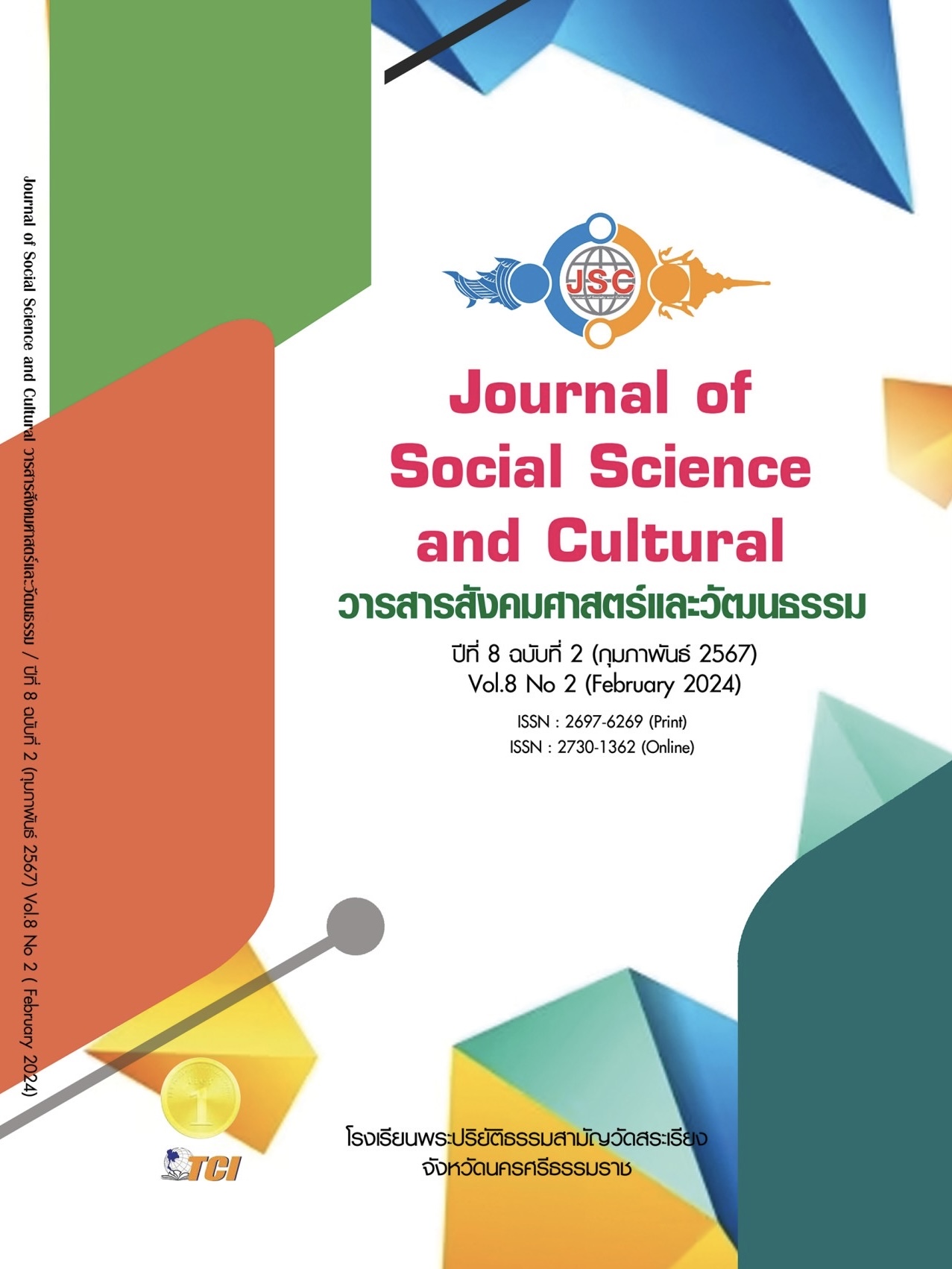EFFECTS OF EXERCISE PROGRAM WITH MUAY THAI DANCE TRAINING ON THE ELDERLY HEALTH
Main Article Content
Abstract
The aims of this study were 1) to compare the average body mass index, flexibility, strength and muscular endurance as well as cardiovascular endurance before and after participation in an exercise program with Muay Thai dance training, 2) to compare the average body mass index, flexibility, strength and muscular endurance as well as cardiovascular endurance of the control and experimental groups, and 3) to compare the average body mass index, flexibility, strength and muscular endurance as well as cardiovascular endurance of the control and experimental groups after the 8th week of the training program. The participants, purposely selected, were 30 elderly aged between 60 - 70 years who lived in the Municipality area, Muang District, Chaiyaphum Province. They were assessed for exercise readiness using an exercise readiness assessment test and screened using an American Sports Medicine Association screening form. The participants were assigned to either the experimental group (n = 15) or the control group (n = 15). The research instruments were 1) a Muay Thai dance training program with an Index of Item-Objective Congruence (IOC) between 0.60 - 1.00 and 2) a physical fitness test. Statistical data analysis consisted of mean, standard deviation, and t-test Independent. The results showed that after the 8th week of participation in the Muay Thai dance training program, statistically significant differences in flexibility as well as strength and muscular endurance were found between the control and experimental groups at a significance level of .05.
Article Details
References
ก.รวีวุฒิ ระงับเหตุ และคณะ. (2565). ผลของการออกกําลังกายด้วยการรํากระบองแบบทุ่งมอกที่มีต่อสุขภาพและสมรรถภาพทางกายของกลุ่มทอผ้าไทลื้อ. วารสารสุขศึกษา พลศึกษา และสันทนาการ, 48(1), 1-12.
กรมพลศึกษา. (2556). แบบทดสอบและเกณฑ์มาตรฐานสมรรถภาพทางกายสำหรับผู้สูงอายุอายุ 60 - 89 ปี. เรียกใช้เมื่อ 17 ธันวาคม 2560 จาก http://ft.dpe.go.th/app/public/download/Test_60-89.pdf
เจริญ กระบวนรัตน์. (2562). เอกสารประกอบการอบรม Intensive Senior Fitness Trainer Certificati
onCourse “การเสริมสร้างความแข็งแรงผู้สูงอายุ”. กรุงเทพมหานคร: มหาวิทยาลัยเกษตรศาสตร์.
นภสร นีละไพจิตร และคณะ. (2566). การพัฒนาโปรแกรมการออกกำลังกายด้วยนาฏศิลป์พื้นบ้านไทยเพื่อพัฒนาการทรงตัวในผู้สูงอายุ. วารสารสุขศึกษา พลศึกษา และสันทนาการ, 49(1), 99-109.
ลดาวัลย์ ชุติมากุล. (2560). ผลของรูปแบบการออกกําลังกายด้วยท่าฝึกโขนเบื้องต้นที่มีต่อสมรรถภาพในการปฏิบัติกิจกรรม การทรงตัวและคุณภาพชีวิตในผู้สูงอายุ. ใน วิทยานิพนธ์ดุษฎีบัณฑิต สาขาวิชาวิทยาศาสตร์การกีฬา. จุฬาลงกรณ์มหาวิทยาลัย.
สำนักงานกองทุนสนับสนุนการสร้างเสริมสุขภาพ. (2566). มิติด้านสุขภาพของสังคมสูงวัยในประเทศไทย. เรียกใช้เมื่อ 31 มกราคม 2567 จาก https://www.thaihealthreport.com/th/articles_detail.php?id
American College of Sports Medicine. (2014). ACSM’s guidelines for exercise testing and prescription. Philadelphia: Wolters Kluwer Health/Lippincott Wlliams & Wilkins.
Bandy, W. D. & Sanders, B. (2013). Therapeutic Exercise for Physical Therapist Assistants. (3rd ed.). Philadelphia: Wolters Kluwer Health/Lippincott Williams & Wilkins.
Carneiro, N. H., et al. (2015). Effects of different resistance training frequencies on flexibility in older women. Clinical interventions in aging, 531-538. Doi: org/10.2147/CIA.S77433.
Carty, C. P., et al. (2012). Lower limb muscle moments and power during recovery from forward loss of balance in male and female single and multiple steppers. Clin Biomech (Bristol, Avon), 27(10), 1031-1037.
Costa, T. C., et al. (2013). Strength and stretching training and detraining on flexibility of olderadults.Top Geriatr Rehabil, 29(2), 142-148.
Hernandez, M. E., et al. (2010). Decreased muscle strength relates to self-reported stooping, crouching, or kneeling difficulty in older adults. Phys Ther, 90(1), 67-74.
Shumway-Cook, A. & Woollacott, M. (2012). Motor Control: Translating Research Intoclinical Practice. (4th ed.). Philadelphia: Wolters Kluwer Health/Lippincott Williams & Wilkins.
Williamson, P. (2011). Exercise for Special Populations. Philadelphia: Wolters KluwerHealth/Lippincott Williams & Wilkins.
Yamane, T. (1973). Statistics: An Introductory Analysis. (3rd ed.). New York: Harper and Row PubLications.


